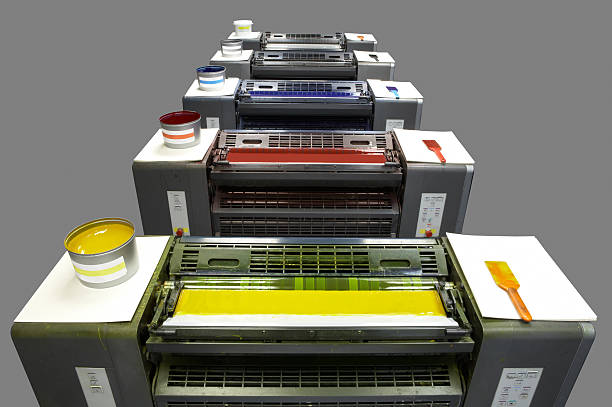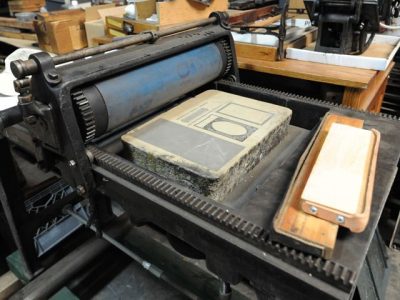litho printing vs Inkjet Printing: What to Consider
litho printing vs Inkjet Printing: What to Consider
Blog Article
A Comprehensive Guide to Comprehending Litho Printing Techniques
The world of litho printing, a strategy stemming from the late 18th century, is a remarkable mix of history, scientific research, advancement and art. This extensive overview will certainly decipher the intricacies of this printing technique, from the structure of litho inks to the difficulties dealt with in modern-day applications. As we venture right into the details of lithography, the relevance of automation and sustainability in guaranteeing its future relevance becomes progressively clear. Remain with us as we journey right into the captivating world of litho printing.
The Historical Development of Litho Printing
The historical trajectory of litho printing, an essential advancement in the realm of interaction, is a captivating tale of human resourcefulness. The procedure advanced with the development of the rotating press, which considerably raised performance. Each phase of litho printing's evolution showcases humanity's relentless quest of performance and quality in visual interaction.
Decoding the Science Behind Litho Printing Inks
Moving on in the exploration of litho printing methods, the focus currently moves to the science behind litho printing inks. The composition of these inks, their drying procedure, and color mixing techniques form the foundation of this complex art form. Understanding these aspects is critical to mastering the craft and attaining the desired print results.
Composition of Litho Inks
In lithographic printing, the basic duty of litho inks can not be overstated. The make-up of litho inks differs depending upon its function, yet normally, they include two major parts - lorries and pigments. Pigments, the color-providing components, are carefully ground fragments put on hold in the automobile, a liquid that carries the pigment onto the printing surface. The vehicle is a complex mixture of oils, solvents, and resins, which influence the ink's drying out time, attachment, and gloss. In addition, numerous additives are present to boost certain residential properties like circulation, drying out, and resistance to ecological results. Each part plays an essential component in the last print's quality, making the accurate formulation of litho inks an intricate scientific research.
Ink Drying Process
From the structure of litho inks, interest transforms to the remarkable process of ink drying. Two main techniques are utilized in litho printing: oxidative drying out and absorption. Absorption, on the various other hand, includes the ink leaking right into the paper fibers, which is a quicker process yet can lead to less vivid colors.
Shade Combining Techniques
While the drying process plays an essential function in litho printing, the science of color blending techniques holds equivalent value. The science behind litho printing inks likewise takes right into account the openness of the ink, which influences just how colors overlay and mix.
The Art and Design Elements in Litho Printing
Litho printing takes a breath life right into art and style with its distinct components. Litho printing accommodates a selection of shades, making it possible for musicians to create vibrant and vibrant prints. This combination of precision and flexibility makes litho printing a favored selection for numerous artists and developers.
Modern Applications of Litho Printing Strategies
Litho printing techniques have actually found considerable usage in the modern industrial field. Its influence and importance continue to expand with the arrival of new developments and technologies in websites the area. This section will discover these modern applications and the transformative duty they play in the printing sector.
Industrial Litho Printing Utilizes
Litho printing stays an essential component of the industrial market. High-volume printing jobs, such as the production of publications, papers, and product packaging, rely on litho printing for its capacity to deliver superior photo high quality and cost efficiency. Litho printing likewise offers a broad shade range, premium to that of digital printing.
Technologies in Litho Printing
Pressing the limits of typical techniques, contemporary improvements have sustained a host of advancements in litho printing. One famous development is electronic litho printing, which combines the merits of digital technology with litho's premium outcome. These developments emphasize the long-lasting look at this website significance of litho printing in the modern globe.
Discovering the Process of Litho Printing: Detailed

Challenges and Solutions in Contemporary Litho Printing

Despite the accuracy and practice that litho printing proudly supports, it is not without its set of contemporary challenges. One of the most common issues consist of the high first configuration expense, problem in printing variable information, and environmental issues as a result of chemical usage. Nonetheless, services are emerging as innovation evolves. Digital litho printing permits cost-effective short runs and very easy modification, dealing with the issue of variable data. Environmentally-friendly inks and much safer plate-making procedures alleviate ecological concerns. Furthermore, advancements in automation have actually reduced labor expenses, additionally democratizing the lithography procedure. Hence, while there are obstacles, the litho printing sector is proactively adapting to satisfy them head-on, ensuring its significance in the future.
Conclusion
In conclusion, litho printing, with its abundant history and scientific details, holds a substantial area in the print sector. The future of litho printing hinges on its capacity to adjust to these transforming demands, verifying its enduring worth in an evolving market.

Report this page